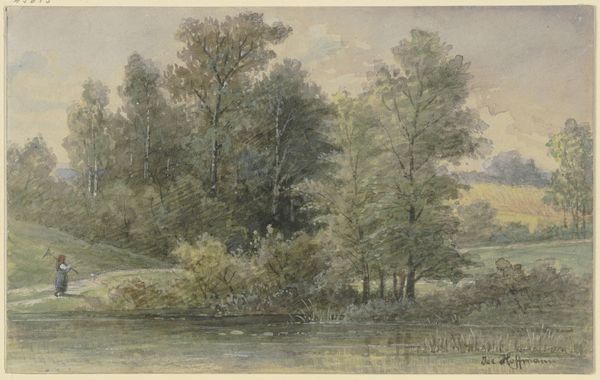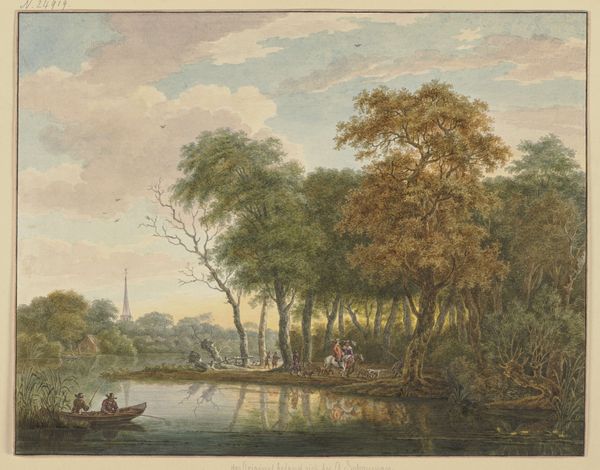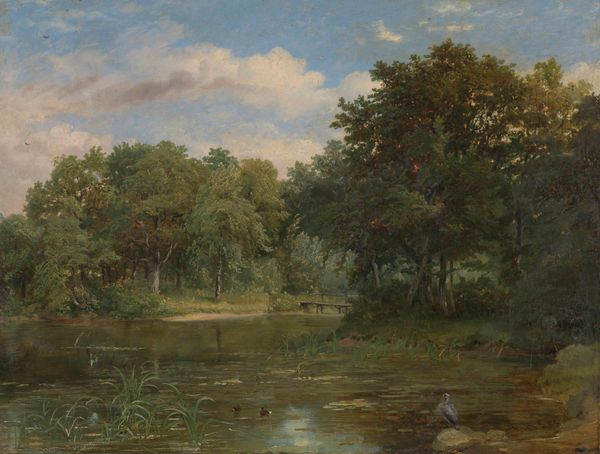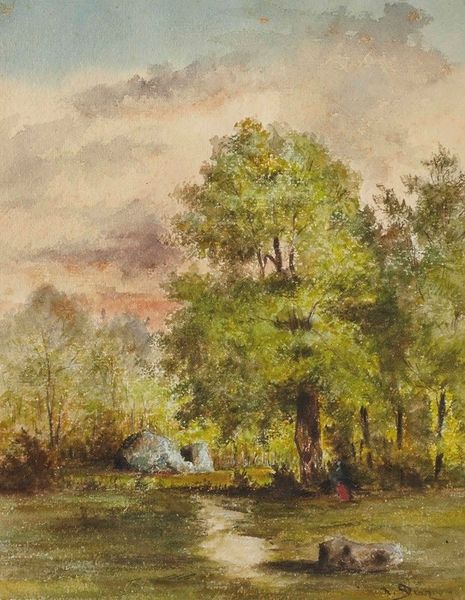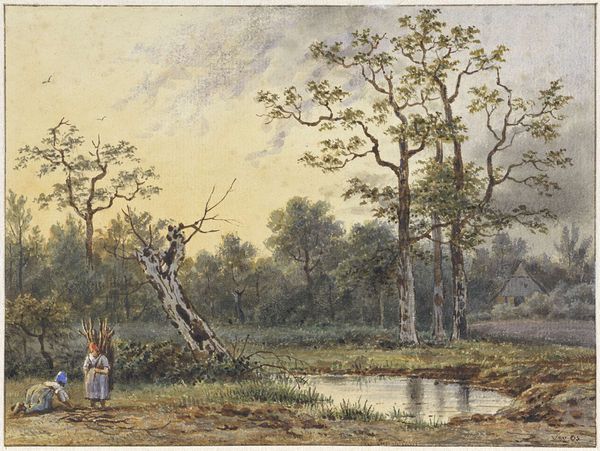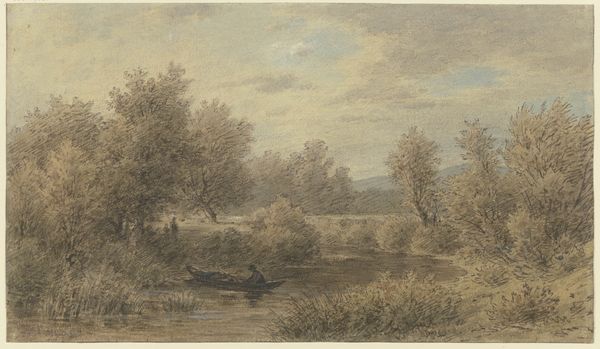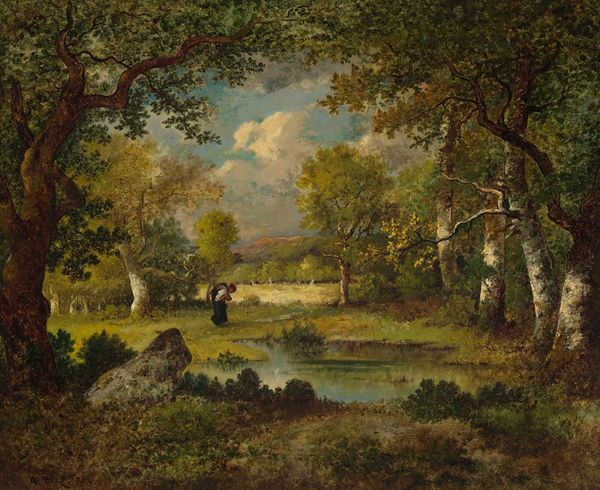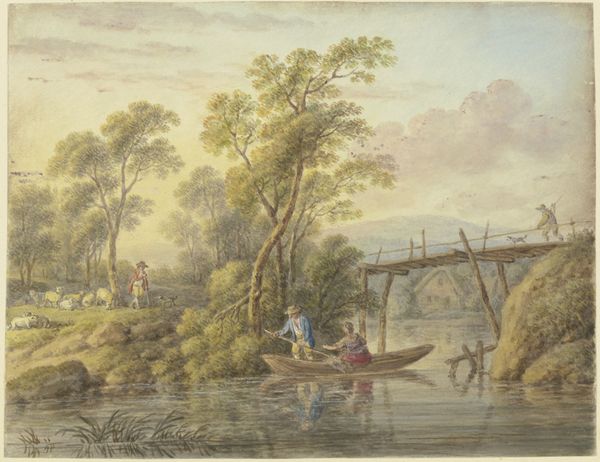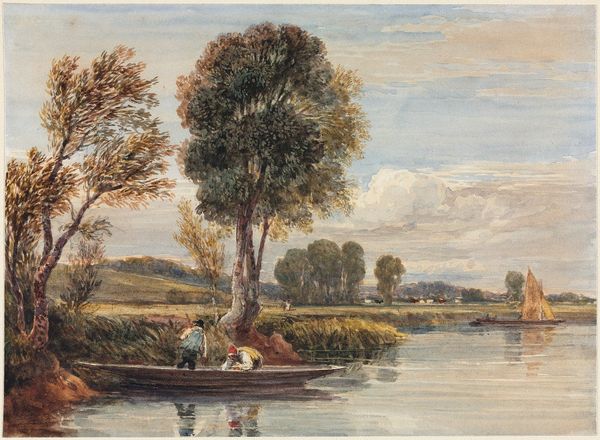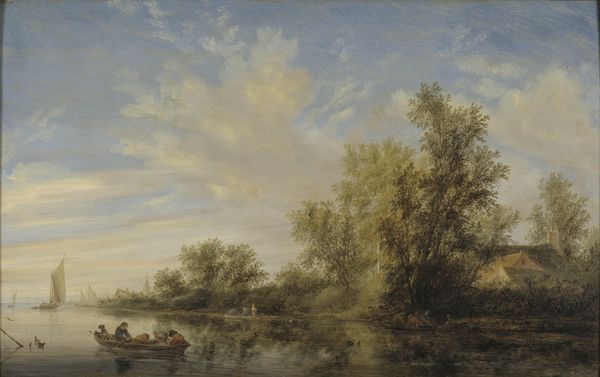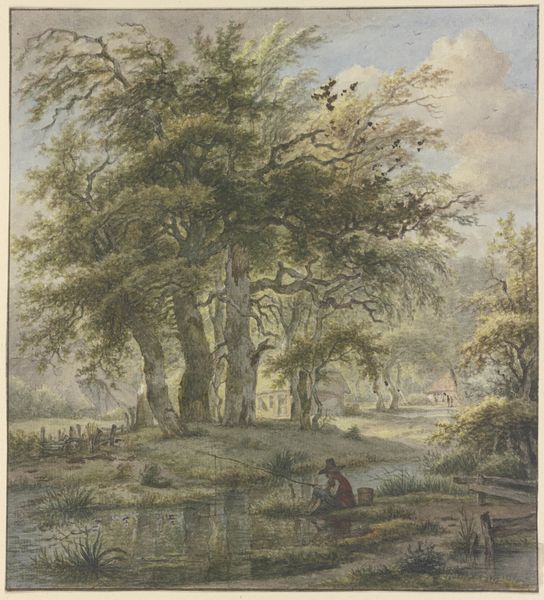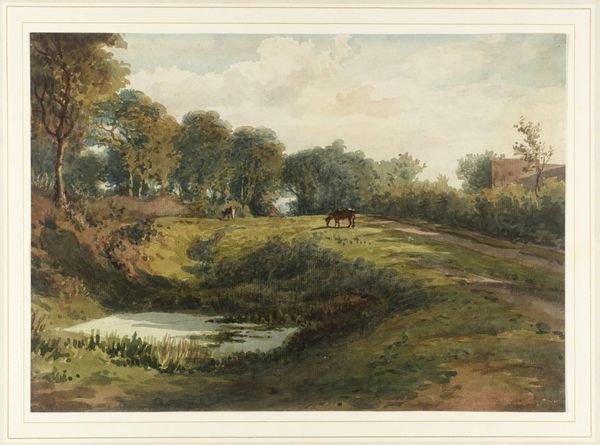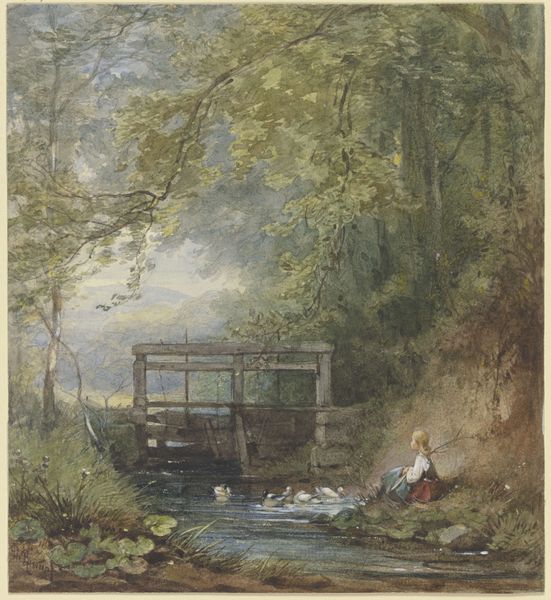
plein-air, watercolor
#
plein-air
#
landscape
#
watercolor
#
romanticism
#
cityscape
Dimensions: height 100 mm, width 152 mm
Copyright: Rijks Museum: Open Domain
Editor: So, this watercolor piece is called "Landschap met figuren in een roeibootje", which translates to "Landscape with figures in a rowing boat", attributed to Georgius Jacobus Johannes van Os, created sometime between 1792 and 1861. The detail is incredible for the size and medium, it looks almost photographic but softens as you look around the scenery, I wonder, what are your initial observations? Curator: Structurally, the work reveals a fascinating interplay of planes. The artist deploys the water surface as a horizontal anchor, reflecting the surrounding landscape and doubling the visual information presented to the viewer. The density of the foliage on the right side creates a visual weight that's carefully counterbalanced by the lighter, cloud-filled sky. Note how this upper expanse repeats forms from below. Editor: That makes a lot of sense! I hadn't quite thought about the cloud and water as matching forms and planes. Can you elaborate more about the focal point and its relation to its surroundings? Curator: Observe the subtle gradation of tones – how van Os transitions from the dark foreground elements to the muted background hues, creating a sense of depth and atmosphere. Note the reflections are slightly abstracted; it is clear this wasn't merely copied from observation. Instead, the artist constructs an alternate reality through manipulating tonal values and hues in relation to the structural aspects of the work. Do you agree with my analysis? Editor: Yes, definitely. The shift between the precise boat details to the more impressionistic treatment of the surrounding trees becomes even more pronounced with your reading. Thanks so much. Curator: Indeed. Considering the artist and timeframe, thinking in these compositional terms is a valuable means of interpretation. I also find that appreciating a structural approach allows for additional perspectives that enriches understanding beyond iconography and other traditional routes.
Comments
No comments
Be the first to comment and join the conversation on the ultimate creative platform.
